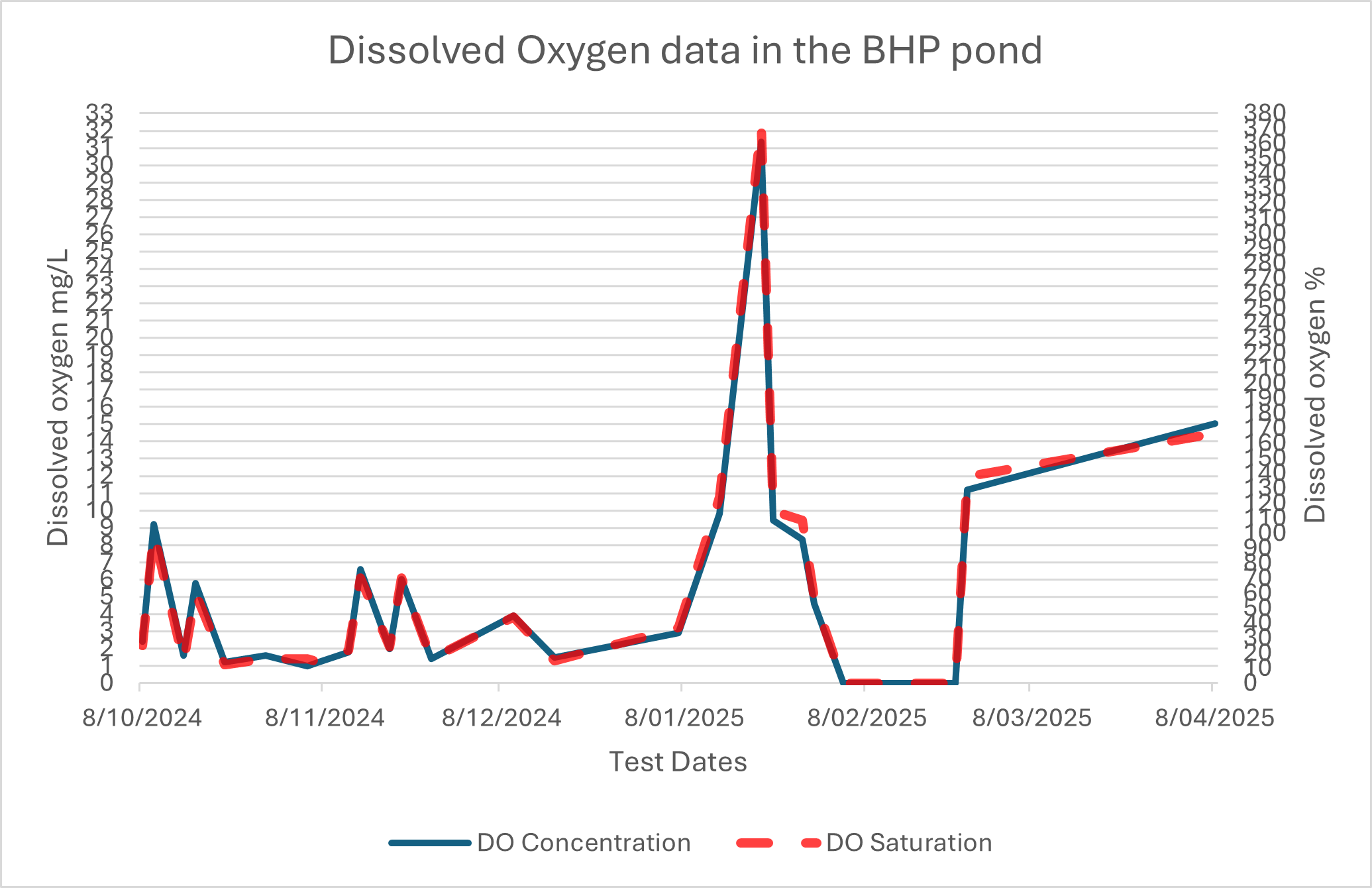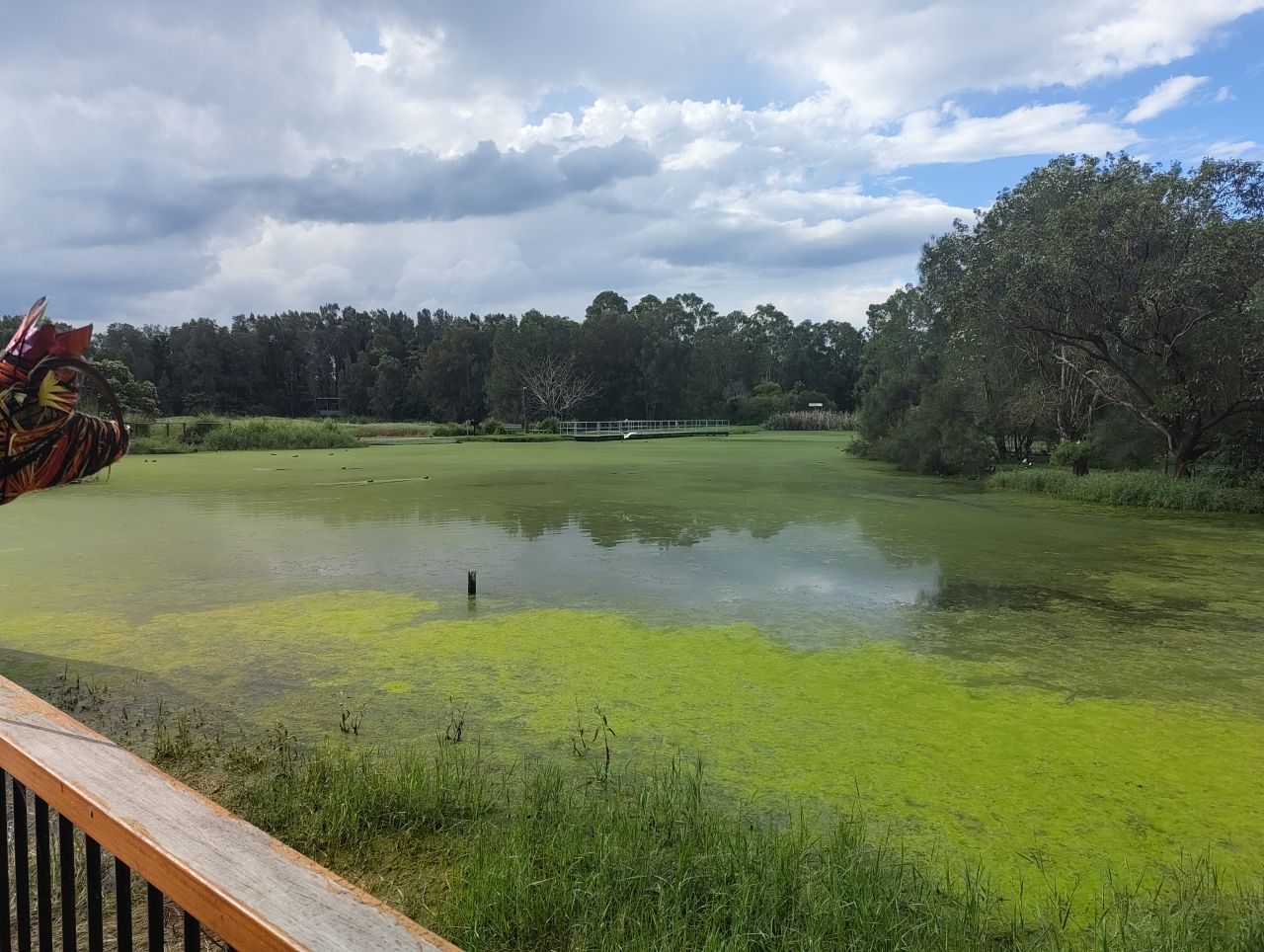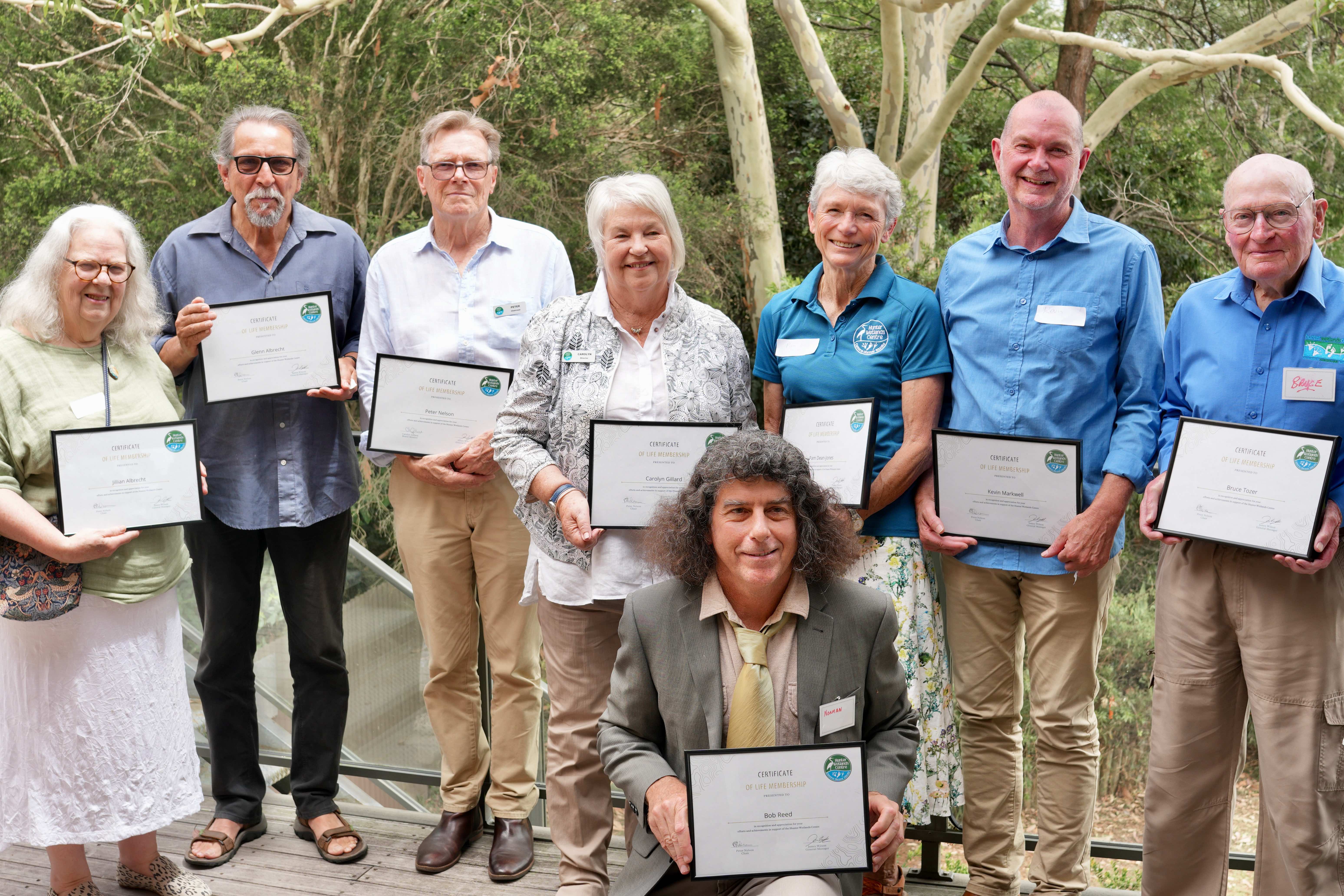BHP Pond Water Quality Testing

Thanks to a grant from Aurizon, the Hunter Wetlands Centre has been able to purchase a new water quality meter, allowing us to monitor the health of our aquatic ecosystems across key sites including BHP Pond, Farm Dam, Brambles Pond, and Water Ribbon Swamp.
While all ponds are important, BHP and Brambles Pond are of particular interest. BHP Pond regularly receives high nutrient loads from runoff and is frequented by over 100+ Magpie Geese each day, both contributing to recurring water quality challenges.
.jpg)
Over the years, BHP Pond has experienced frequent algal and azolla blooms. In late November last year, we observed the early stages of another bloom, later confirmed through testing to be a Blue-Green Algae Bloom. This was likely triggered by elevated phosphorus levels (0.48 mg/L in November) combined with summer water temperatures approaching 30°C. These conditions led to a major spike in dissolved oxygen in January, pushing levels well above the healthy range of 6–10 mg/L. Algae produces large amounts of oxygen through photosynthesis, so it is likely this bloom contributed to the significant spike in dissolved oxygen.
Although we are normally aiming for high dissolved oxygen levels, too much dissolved oxygen for too long can also be detrimental to the marine life, potentially causing Gas Bubble Trauma. However, luckily this increase in dissolved oxygen was short lived.

Following heavy summer and early autumn rainfall, phosphorus levels dropped to 0.22 mg/L. While still high, this reduction coincided with the decline of the algal bloom, and testing showed that toxic bacteria returned to safe levels. This is attributed to lower phosphorus, improved oxygenation through rainfall and decreasing temperatures.

These insights help us make informed decisions about how to manage the wetlands and maintain the delicate balance of our ecosystems. Regular monitoring allows us to detect emerging issues early, whether it's algal blooms, nutrient surges, or habitat stress, and act accordingly to support the incredible biodiversity of the wetlands.
We're excited to share that we’ve developed a new solution to help improve water quality across BHP and Brambles Ponds. Stay tuned for our next blog post where we’ll explain the approach and why we believe it will be effective.
Interested in the data? You can explore all our raw water quality data here
.webp)



